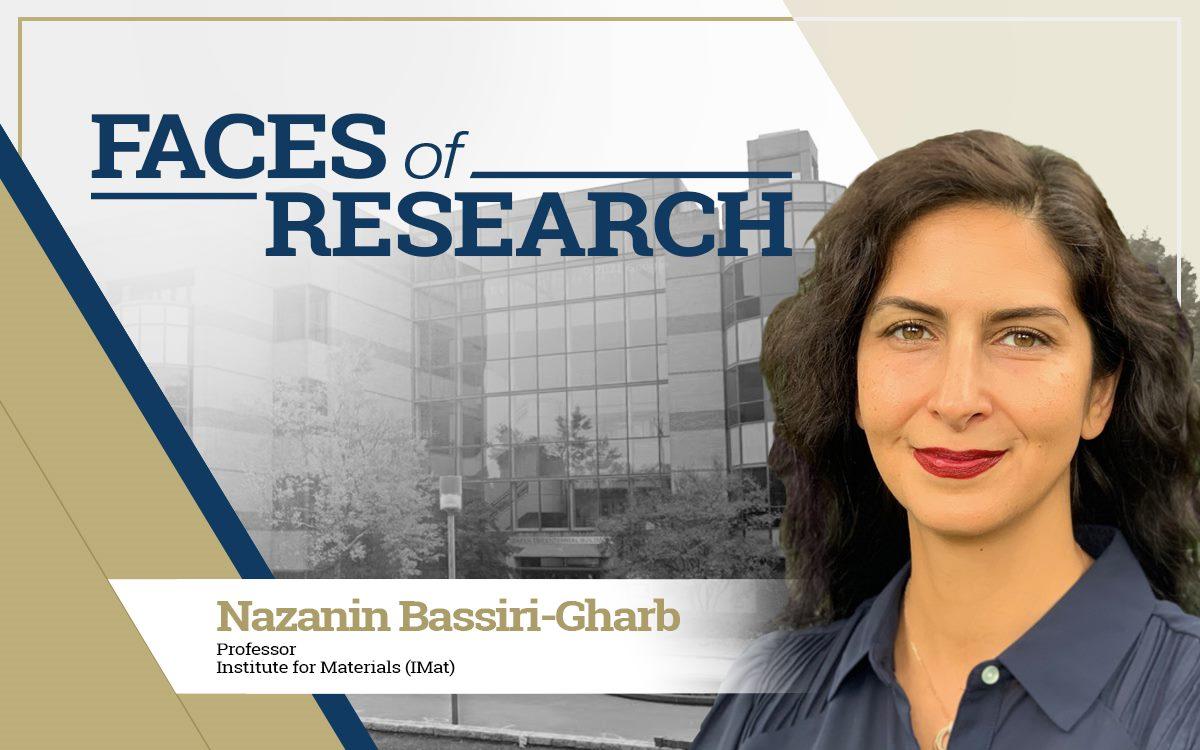Faces of Research: Nazanin Bassiri-Gharb

February 16, 2022
Meet Nazanin Bassiri-Gharb, Harris Saunders, Jr. Chair & Professor of Mechanical Engineering, and faculty researcher at the Institute for Materials (IMat) and the Institute of Electronics and Nanotechnology (IEN).
IMat and IEN are two of Georgia Tech's 10 interdisciplinary research institutes (IRIs) within the Georgia Tech Research enterprise.
What is your field of expertise and why did you choose it?
I work on functional materials, their processing, characterization and fundamental science. These are materials that transform one type of signal into another: electrical to mechanical, chemical to electrical, optical to electrical. Given these transduction abilities, functional materials are the fundamental blocks enabling smart systems and devices, capable of interacting with the environment.
I am fascinated by how to translate the concept of functional material to “smart” material.
What makes Georgia Tech research institutes unique?
Georgia Tech’s research enterprise is so vast that only the research institutes can truly connect all those involved in specific research and educational efforts under bigger scope umbrellas. Given the wide range of research interests at our Institute, it is not surprising to discover the impressive depth and breadth of the research institutes at Georgia Tech, and how often they are strongly tied into our education efforts. What I really appreciate is also the fact that the research institutes are fluid in their composition, that they are people and interest driven. I interact more with the Institute of Electronics and Nanotechnology when processing functional materials, with IMat when using characterization facilities, and the Institute of Data Engineering and Science when applying machine learning approaches to the data obtained. Georgia Tech has always prided itself in its interdisciplinary research innovation and this is indeed where the research institutes shine, moves across boundaries of School and College affiliations. And of course, our research institutes facilitate connections within Georgia Tech, but also to the outside research, science and engineering enterprise.
What impact is your research having on the world?
While we cannot (yet!) make materials “think”, the ability of sensing the environment and reacting to it, designing such interactions and, ultimately, creating devices capable to translating that functionality to the physical world around us is at the core of the scientific endeavor. These capabilities enable a wide range of devices that started as mimicry of complex biological systems – localization with acoustic or ultrasound waves, infrared vision, chemical sensing – and many applications that were only science fiction not that long ago: mobile phones, miniaturized and portable computing, bionic limbs and robotics, space stations, and of course artificial intelligence. Almost everything in the modern world benefits from functional materials.
What do you like to do in your spare time when you are not working on your research or teaching?
I love spending time with my husband and two daughters, and I really enjoy travel, exploring different cultures, food, architecture, and history. When I am not traveling physically, I enjoy taking a flight of imagination with reading- from classical literature, to fantasy, thrillers, Victorian romance, leadership and self-improvement.
